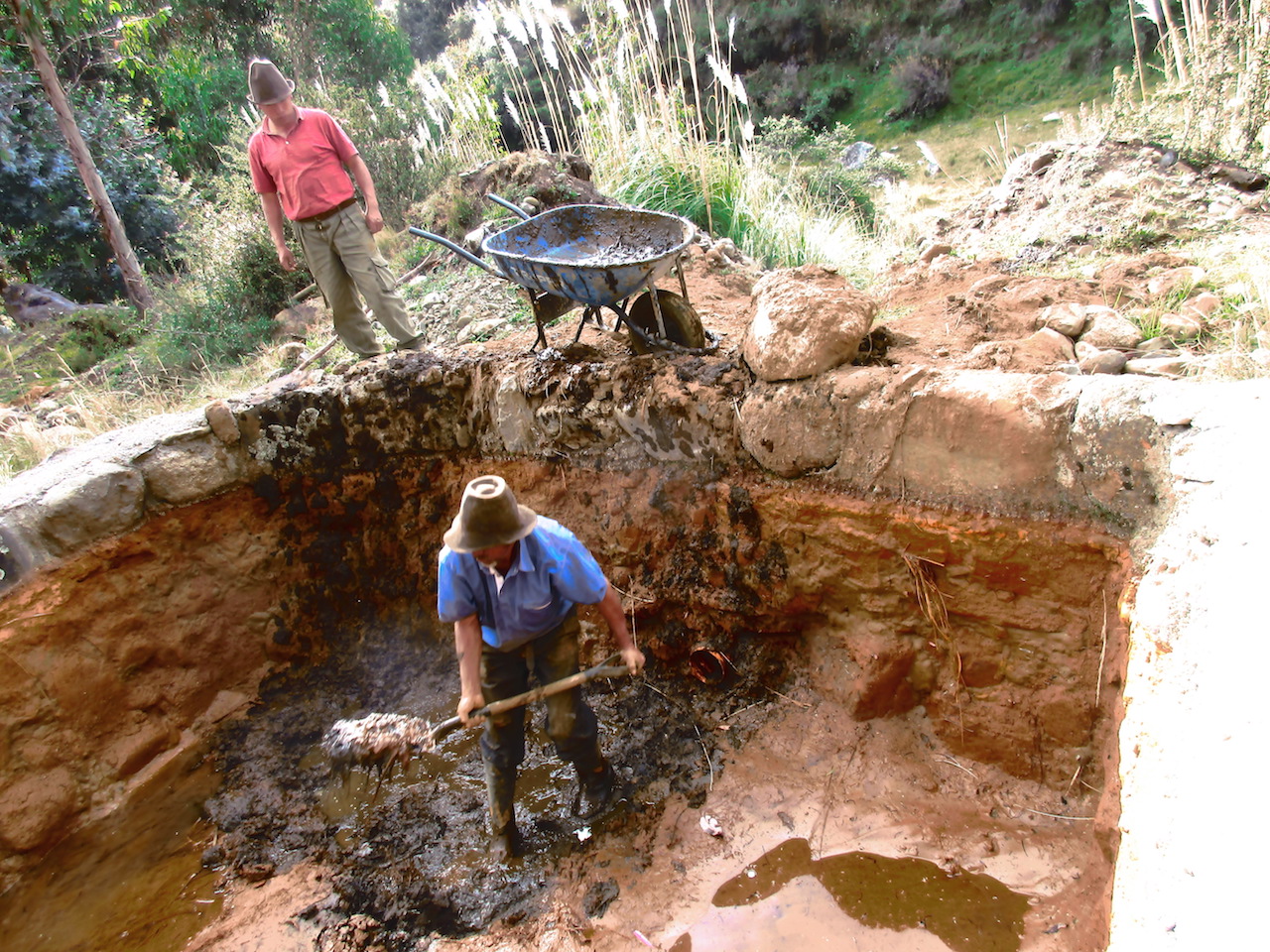

Bioremediation includes the use of organisms to eliminate contaminants from the soil or water. In the bioremediation system, water from the Chonta canal passes first through settling ponds and then through larger ponds where cattails and reeds - local plants - were installed to absorb rust from the water through their roots. Bacteria are also used to reduce the acidity of the water. Finally, the canal provides 120 L of purified water per second for the entire population and was implemented thanks to the collaboration of institutions based on community demand. It was designed under criteria of traditional and scientific knowledge: the appropriate places to build the sedimentation ponds, the wetland area, the selection of plants such as cattails and the technology for transplanting into the wetlands. CIAL members and the community clean the sedimentation ponds once a year between April and May. When the rains start, they let in a minimum flow, only for wetland maintenance and the use of some farmers.
The CIAL monitors water quality in the system twice a year; they mainly measure pH and electrical conductivity.
- It started from a locally driven process to solve a local priority issue.
- The measure is part of a larger strategy: the Community Development Plan (CDP).
- Organization of local participation through the committee.
- Prior relationship of trust between the community and the Mountain Institute, which supported implementation.
- Continuous monitoring of the quality and proper functioning of the bioremediation system by the committee members.
- It is necessary to plan the supply of inputs, either by confirming if there are sources to acquire them or if it will be necessary to produce them, such as sulpho-remediating bacteria in the wastewater treatment plants. While the plants do exist, there is not good management and not enough bacteria, so the laboratory needs to produce them especially for installation in wetland ponds.
- The technology also requires rules for the proper use of treated water.
- The operability of the water committee is a key factor and requires institutional strengthening and advice.
- An important role of the committee is to follow up the system through monitoring and maintenance of the infrastructure.
- Implementation needs to be accompanied by training, such as in infrastructure monitoring and maintenance (cleaning of sedimentation ponds and wetlands) and sediment management.